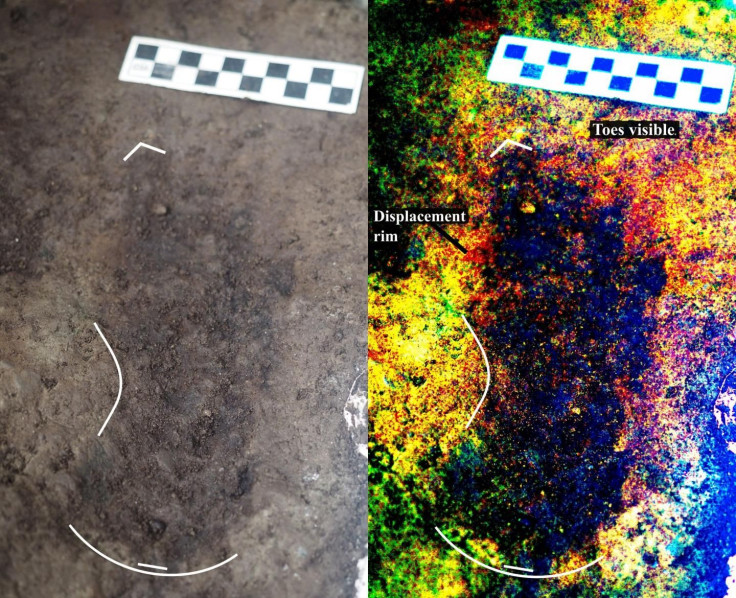13,000-Year-Old Footprints Uncovered In Canada, Could Rewrite Human Migration History

A group of researchers exploring Canada’s Pacific coast have found a series of 13,000-year-old footprints — a discovery that could rewrite the history of human migration from Asia to the Americas.
The impressions, believed to be the oldest to have been discovered in North America, belonged to three barefooted individuals, two adults and a child. Duncan McLaren, an anthropologist at the Hakai Institute, and colleagues spotted them on the shoreline of Calvert Island, British Columbia.
Though the area is covered in dense forest and is only accessible by boat, McLaren and his team launched an expedition in search of evidence suggesting the presence of ancient humans in the area. They were hoping for ancient relics, stone tools or archaeological artwork, but found real human impressions, footprints which likely got preserved under multiple layers of sand, gravel, and clay. The first print was discovered in 2014, while over next two years, they found more impressions in the same area.
Radiocarbon and photographic analysis of the unearthed sediments confirmed the marks were about 13,000 years old. During that time, the sea level would have been six to ten feet lower and allowed human activity in the coastal region.
The ground-breaking discovery could have a major impact on the history of human movement into the Americas. Essentially, it bolsters the lesser known idea of coastal migration — a hypothesis that suggests early humans might have taken a coastal route to North America rather than a land bridge at the close of the last Ice Age, some 11,000 to 14,000 years ago.
The idea of traveling along the Pacific West Coast or the shorelines of present Alaska and British Columbia sounds promising because the route would have provided enough food for human survival, Gizmodo reported. However, there hasn’t been hard evidence to support the theory, a problem which changes with this discovery.
"This finding provides evidence of the seafaring people who inhabited this area during the tail end of the last major ice age," McLaren said in a statement. “It is possible that the coast was one of the means by which people entered the Americas at that time.” The people could have used a watercraft or something to enter and explore the area.
That said, the research team believes further excavations in the region could help them uncover more footprints like the ones from these three individuals and provide more insights into the patterns of early migration, or how ancient humans came in and expanded towards drier areas later.
The discovery and analysis of the footprint were detailed in a paper published in the journal PLOS One.
© Copyright IBTimes 2024. All rights reserved.



















